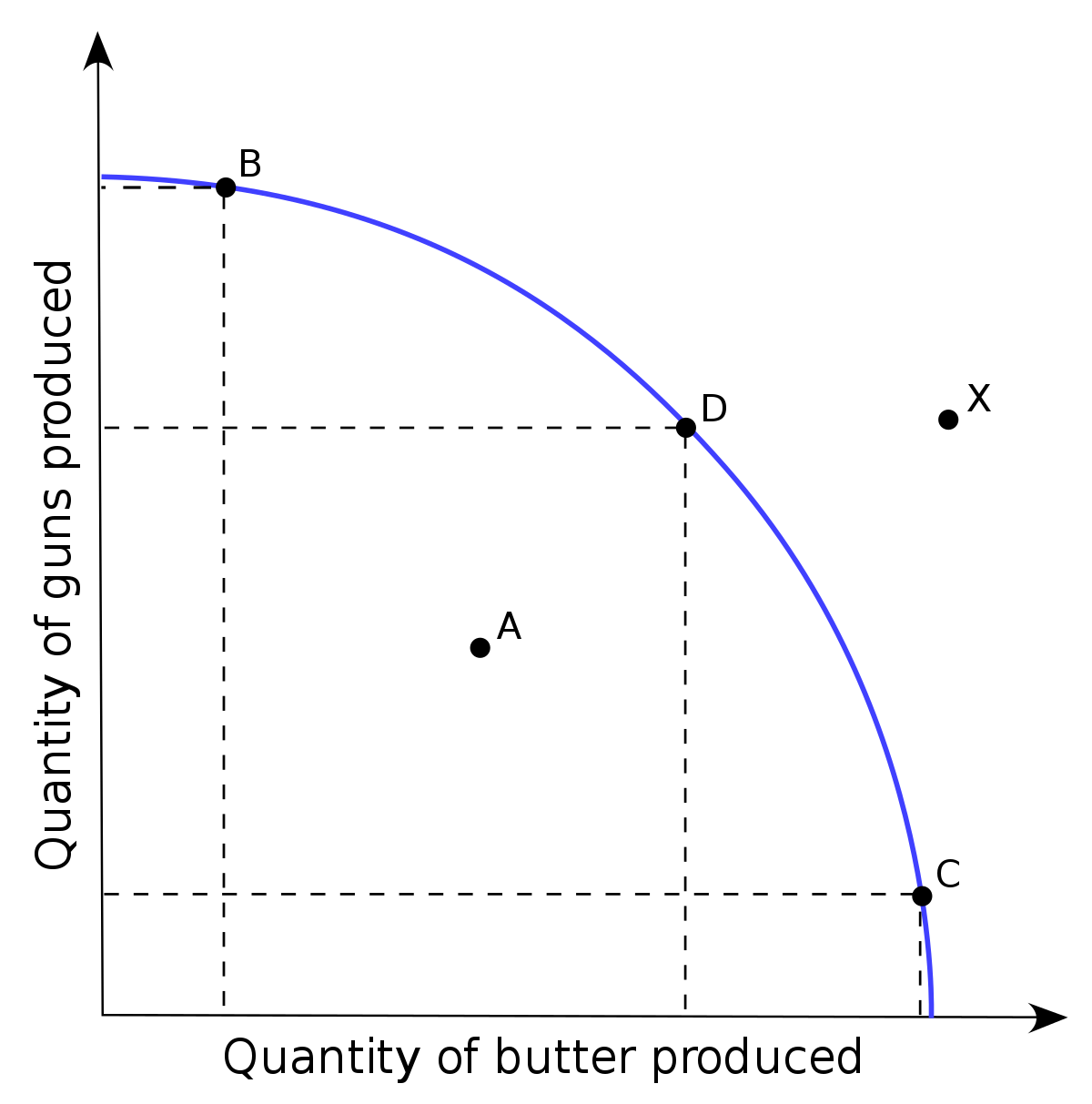Macroeconomics; Guns & Butter Relationship Theory
“Guns and butter” is a famous or renowned model that explains the relationship between the two goods which are important for the growth of a particular nation. This model explains the importance of defense and civilian goods and helps to know the difference between these two goods. It helps a nation to choose between guns or butter or the combination of both aspects in which guns refer to the defense or military goods and butter refers to the civilian goods (Samuelson, 2010). The Guns and Butter model is generally used as a simplification of national or regional spending as a part of GDP (Gross Domestic Product) of a nation or a country.
The nation should regulate the perfect ratio of guns and butter that meets its needs which means the ratio of defense goods to the civilian goods. It tells a country about its priorities that it should choose for its economic growth which states that how much amount a country spends on its military resources and how much amount a country spends on its non- military resources which mean domestic resources (Leheny, 2003). It is up to the country to choose its needs between the gun and the butter or the combination of both so that it can prosper in various prospects.
Apart from this, there are three significant aspects of the “Guns and butter” model and these aspects are scarcity, opportunity costs and Production Possibilities Frontier (PPF) in which Scarcity simply means lack of resources. Guns and butter model has analyzed Scarcity as lack of resources in which if a gun is available then, butter is not available in sufficient amount and it states that there will be lack of one resource between these two resources (Nelson, and Ackerman, 2012). For example, lack of funds for butter (domestic resources) can come under this category.
With context to this, the government of a particular country has a limited amount of Gross Domestic Product (GDP) for the production of goods (guns and butter) and the government always gives priority to the guns resources as the defense of the country is extremely important in order to protect it from the external attacks and spend the rest amount to fulfill its butter needs. Sometimes, there is lack of funds or resources and the government has to choose one resource as a priority which is known as scarcity.
On the other hand, Opportunity Cost means the cost of a resource against another resource, for instance, in a theoretical economy, a country make a choice in order to how much of each good to produce as an economy produces more number of guns which means defense resources then it must reduce its production of butter which means domestic resources and vice – versa (Leheny, 2003). Additional to this, Production Possibility Frontier (PPF) is also an important element of guns and butter model which is also known as Production Possibility Curve, Production Possibility Boundary or Product Transformation Curve that represents production tradeoffs of an economy which is given fixed resources.
(Production Possibility Frontier in Guns & Butter Concept)
This element, PPF, is represented into the above graph that best determines the increment and decrement in the quantity of guns produced against the quantity of butter produced by a nation which means that increasing production of butter states decreasing production of gun and vice – versa. The curve showing this increment and decrement of resources is known as Production Possibility Frontier (PPF) and the sacrifice in the production of second good is known as the Opportunity Cost as increasing production of the first good (gun) entails loosing the opportunity to produce some amount of the second (butter). Therefore, the following model helps to determine the relationship between a nation’s investment in defense and civilian goods.







